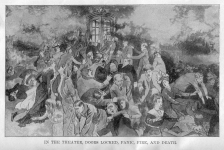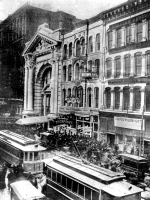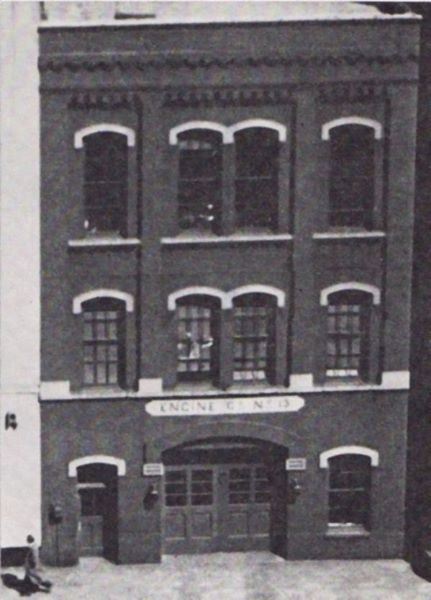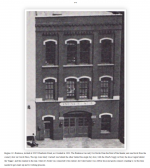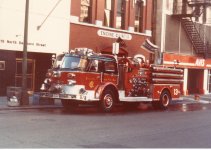
‘Absolutely Fireproof’: Iroquois Theatre blaze kills more than 600
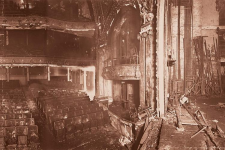
On Dec. 30, 1903, hundreds gathered at the Iroquois Theatre in Chicago, which opened the month before.
The theater was billed as “Absolutely Fireproof” in advertisements and playbills, but that did not prevent the death of more than 600 people when a curtain ignited during a matinee performance of “Mr. Bluebeard,” which included a troupe of nearly 400 actors.
The performance brought a record crowd that day, with each of the 1,700 seats filled and hundreds of patrons filling the “standing room” areas at the back of the theater. Many were attending the show were women and children.
Author Anthony Hatch wrote in his book, “Tinder Box: The Iroquois Theatre Disaster, 1903,” that “... the building was without a sprinkler system or even basic firefighting equipment; there was no backstage telephone, fire alarm box, exit signs, a real asbestos curtain or ushers trained for emergencies.”
One of the stars of the show, Eddie Foy, later recounted, “It struck me as I looked out over the crowd during the first act that I had never before seen so many women and children in the audience. Even the gallery was full of mothers and children.”
About 3:15 p.m., as the second act of the play began, an arc light shorted out and sparks ignited a muslin curtain. A stagehand attempted to smother the flames with a dry chemical mixture but the flames soon spread to the high gallery above the stage.
Many theatergoers were attempting to flee and some found the fire exits behind draperies, but were unable to operate the bacule, or counterbalanced locks.
Three doors to the theater were opened but the majority could not be opened. Patrons began trampling one another in an attempt to escape the flames.
Some were killed while trapped in dead ends or while attempting to open windows designed to look like doors. As performers and stagehands fled through the back of the theater, the wind rushed in and caused the fire to quickly grow larger.
Some escaped through the coal hatch and others through windows. Actors and stagehands became jammed at an inward opening door, which was removed at the hinges by a passing railroad worker carrying tools.
Freight doors, normally used for scenery, also were opened, causing air to again rush in and resulting in a fireball, according to reports from the time.
Patrons who escaped on the north side of the theater found themselves on unfinished fire escapes. Some jumped to their deaths and others fell.
It was reported at the time it took only minutes for the fire to fill the inside of the three-tiered theater.
Hatch summed up the fire, “During the second act, a short circuit exploded a backstage spotlight, touching off a small fire which spread in minutes throughout the theater. Panic set in as people clawed at each other to get out, but they could not find the exits, which were draped. The doorways, locked against gate-crashers, were designed to open in instead of out, creating almost impossible egress.”
While accounts vary on the number of lives lost in the fire, most all sources say more than 600 lives were lost.
But, because of the fire in the Iroquois Theatre, all doors in pubic buildings must open in the direction of egress.
Fire Marshal Ken Helms and Assistant Fire Marshal Bill Moss said many standard codes are the result of losses such as those that occurred at the Iroquois Theatre.
“A lot of older fires in history, that started the whole code process,” Helms said. “Buildings are being designed to get out of them safely, There are different materials and ways to build now.”
Moss said modern codes are working because large-loss-of-life fires are less common.
“Every day there’s fires, but it seems like you don’t have these huge loss of lives fires,” he said.
Moss said one contribution to higher losses of life in fires is the failure to react quickly enough.
“I think a lot of times people are slow to realize the severity of the situation,” he said. “Sometimes they don’t understand the severity of how fast it’s going to grow, or they assume it is part of the show or they’re waiting for somebody to take care of it.”
Editor’s note: This is the first in a series of stories about historic and deadly fires that resulted in changes to U.S. fire and building codes.

www.enidnews.com

 www.chicagotribune.com
www.chicagotribune.com
